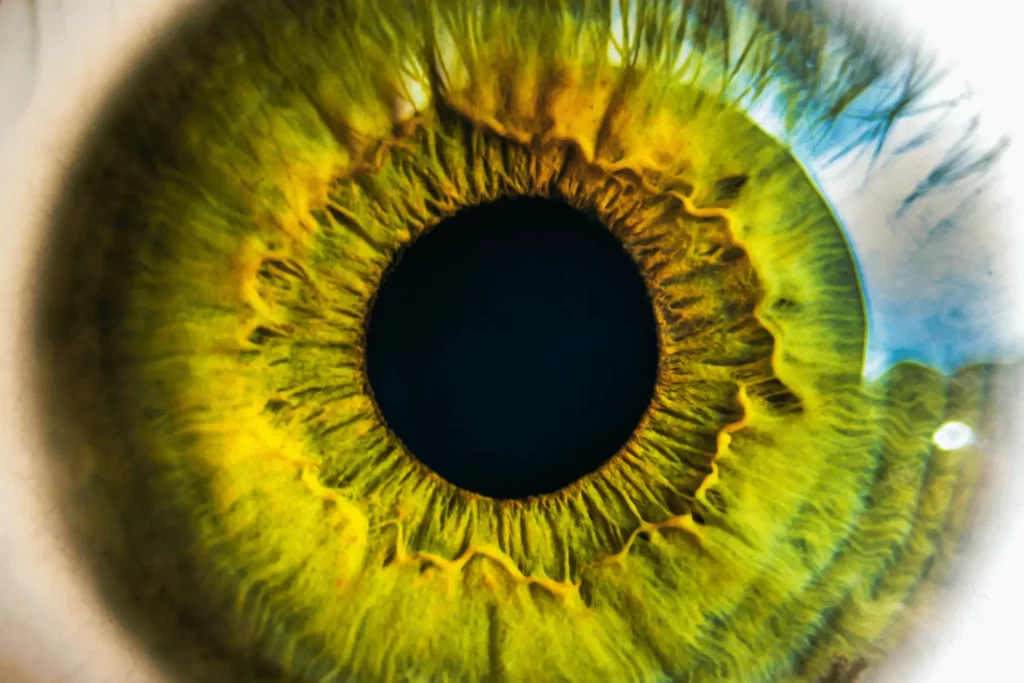Inhaltsverzeichnis
iEMDR sounds like a code from a foreign language dictionary (does it even exist anymore?!).
It is the abbreviation for a method that works holistically – and is basically quite simple and effective.
Integrative EMDR for the treatment of large and small wounds. Traumas and psychological injuries.
Eye Movement Desensitation Reprossessing. EMDR. Clearly formulated: De-sensitisation and processing (of experiences) through eye movements.
The “i” in front of EMDR is special because it means “integrative”. Here, the classical EMDR method is enriched by the methods of bilateral stimulation, NLP and systemic work. Dr Inge Grell, who developed iEMDR in this form, says: “I have, so to speak, supplemented Shapiro’s original problem-focused approach with a solution-focused approach. This approach proves to be extremely helpful and efficient: whatever needs to be processed and released is allowed to emerge. Past experiences are addressed and processed to the extent that it really makes sense for coping with life in the here and now.”

iEMDR – The power of a holistic approach
Full of senses. Sensual experiences. Smell, taste, feel, see, hear.
The renewal of memories that shape our self-image also changes the way we see others.
Dr. Francine Shapiro
Traditional approaches in psychotherapy usually have a purely cognitive focus – recognising and restructuring thoughts. However, traumas – and this is why these methods only work to a limited extent, in that at best they lead to an understanding of the event, but not to its resolution – are located in the body, in every single cell.
How is this possible?
A trauma – a wound – leaves traces, not only in our thoughts, but also in our cells. Everything, really everything that flows into us (words, moods…) or that we consume (magazines, news, etc.) is anchored in our body. Both experiences that are pleasant for us and stressful ones. The manifestation of stressful experiences on a cellular level can have long-term effects on our body. Research has shown that trauma can cause physiological changes ranging from prolonged tension to inflammation. This illustrates how profoundly traumatic events can affect our biological system. The integration of body-based approaches such as iEMDR opens up ways to address these deep-seated effects and promote holistic healing.
As a highly effective methodology, iEMDR works through the interplay of body, mind and emotions.
Source of wisdom: Our body
Ever had butterflies in your stomach? Or a really bad gut feeling? Our body is a rich source of wisdom about our inner experience. Every sensation, every tension and every movement are messages from our body that tell us a lot about ourselves.
Anyone who has experienced stress is probably also familiar with tension in the neck, a fluttering feeling in the stomach or sleepless nights. These are all signals from our body in response to stress, for example. They manifest themselves over the course of repeated stress and eventually become physical complaints. These signals are like a map to our emotions and thoughts. When we learn to listen carefully to our body and to be mindful of ourselves, we begin to understand ourselves better.
In trauma therapy, as well as in approaches such as iEMDR, the body plays a central role. Through targeted exercises such as breathwork or body awareness, we can become more aware of our sensations. This physical self-observation enables us to uncover deep emotions and hidden blockages that would otherwise linger in the subconscious.
Our body is a living archive of our experiences, and by consciously integrating physical aspects into the healing process, we can discover ourselves on a new level. By learning to see our body as a partner on our journey to self-healing, doors open to a deeper connection with ourselves and to more comprehensive growth.
No one is free from trauma
That may seem surprising at first, right? But it is important to understand what a trauma – be it major or minor – actually is: a psychological wound. To understand this even better, we should distinguish between two types of trauma: shock trauma, which occurs suddenly, such as a car accident, and developmental trauma, which often occurs in our childhood – in our development.
It is important to emphasise here that traumatisation is NOT dependent on whether the event is considered “major” or “minor”. Every person reacts differently to events. What is traumatic for one person may not be so traumatic for another.
Trauma is subjective, and the way it affects us can vary from person to person. It may be that seemingly small events have profound effects on our mental health, while other people cope with seemingly traumatic experiences remarkably well.
The most important thing to remember is that there is no reason to minimise your own trauma. Whether big or small, the effects can be real and tangible. Recognising the trauma as a psychological wound is the first step on the road to healing. Everyone deserves support and understanding on their journey to cope with and overcome trauma. And ultimately, it is these experiences that shape us into the unique people we are.
Trauma is a “stupid friend” that our mind and body do not forget.
Dr. Gabor Maté

Bullying, termination, ghosting
All of these can be seriously traumatic events for a person.
However, very few people think of this. Instead, they struggle through life, don’t understand their tiredness or their recent physical pain and run from one doctor to the next. Usually without any real “success”.
The body and soul therefore “respond” completely normally to such stressful experiences. Stress and emotional anguish can manifest themselves physically and lead to real health problems. This is why it is so important to treat not only the physical symptoms, but also the deeper emotional wounds. To do this, it is important to really seek out a specialist who specialises in trauma and holistic work with the body. This could be an iEMDR therapist and coach, for example, or a Somatic Experiencing (SE) specialist or someone who works with SEI® – Somatic Emotional Integration. Because: You have to feel it to heal it.
The greatest damage done by neglect, trauma or emotional loss is not the immediate pain they cause, but the long-term distortions they create in the way a developing child will continue to interpret the world and their situation in it. All too often these ill-conditioned implicit beliefs become self-fulfilling prophecies in our lives.
Dr. Gabor Maté
Revolutionary transformation with iEMDR
Our brain and body cannot process the overwhelming experiences caused by trauma. iEMDR makes it possible for traumatic experiences to be reprocessed. This allows the nervous system to move from “high alert” (i.e. red traffic light) to yellow or green – calm returns. Often after years. Or even decades.
I have already worked with clients who came to me with a “simple” but stressful issue. For example, a constantly nagging boss who simply made work very unpleasant, or an event that arose from a dream – evoked unpleasant feelings and could not be categorised.
All these issues could be dealt with very efficiently. Often just one or two sessions are very effective (of course this depends on the depth of the issue).
If you have such an issue and would like to work on it, I invite you to have a personal conversation with me.
I would be happy to accompany you as a life journey companion into a (re)vitalised life. And if you like, I’ll see you soon by the sea – with the infinite blue – here with me on Mallorca – or online on your personal journey.
All my heartfelt greetings.
Christine


